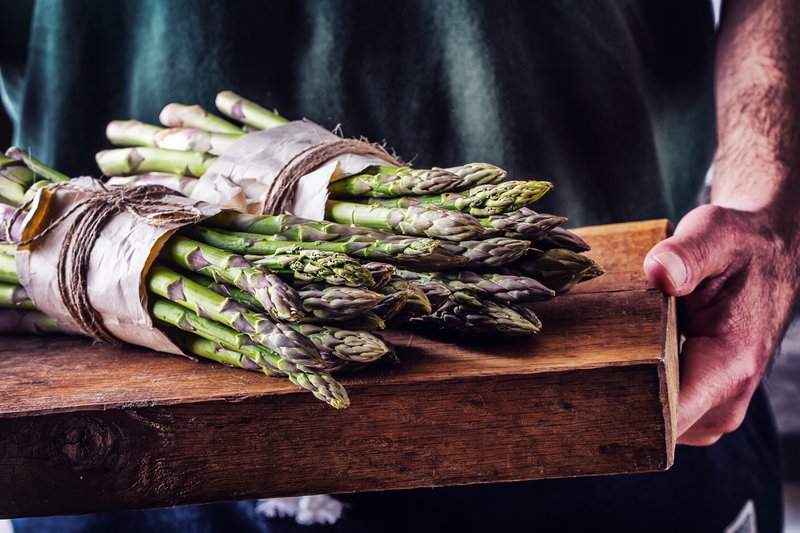Keeping Your Garden Thrive Through Winter's Chill
Posted on 13/08/2025
Keeping Your Garden Thrive Through Winter's Chill
When winter arrives, gardeners often face a tough challenge: how to keep their beloved gardens thriving through the coldest months. While plummeting temperatures, frost, and even snow can threaten your plants, with planning and proper care, your winter garden can survive and even flourish during the chill. This comprehensive guide will show you how to protect your beds, nurture perennials, grow winter vegetables, and prepare for a robust garden come spring.
Why Winter Care is Crucial for Your Garden
As the days shorten and the thermometer drops, your garden enters a period of dormancy. However, proper winter gardening techniques can make a world of difference:
- Protect plants from extreme conditions
- Preserve soil structure and nutrients
- Encourage stronger, healthier growth in spring
- Keep certain crops productive in cold months
Let's dive into the essential strategies that will help your garden thrive during winter's chill.

1. Selecting the Right Plants for Winter Gardening
Plant selection is the foundation of successful cold-weather gardening. Some plants are naturally suited to survive--or even thrive--in frigid conditions. Consider introducing these hardy options:
Cold-Tolerant Perennials
- Hellebores: Also known as Christmas roses, these sturdy flowers bloom in mid-winter.
- Snowdrops: Delicate yet resilient, they are among the first to push through frozen ground.
- Heuchera (Coral Bells): With evergreen foliage, they add color all season long.
Winter Vegetable Crops
- Kale
- Spinach
- Brussels sprouts
- Carrots
- Leeks
- Swiss chard
These vegetables continue growing, slowly, even under light snow cover.
2. Preparing Your Garden Beds for Cold Weather
Preparation is key in maintaining a vibrant and thriving garden during winter's chill. Follow these steps to get your beds ready for frost:
Clear Out Debris
- Remove dead plant matter to avoid harboring pests or diseases over winter.
- Compost healthy, disease-free trimmings. Destroy any infected material.
Apply Mulch Generously
- Add a thick layer (2-4 inches) of organic mulch, such as straw, shredded leaves, or wood chips.
- Mulch insulates the soil, suppresses weeds, and prevents freeze-thaw cycles from damaging roots.
Enrich the Soil
- Incorporate compost or well-rotted manure in late fall to bolster soil nutrients for winter crops and spring planting.
Properly protected beds will empower your garden to flourish despite winter's harsh conditions.
3. Protecting Plants from Frost and Snow
Freezing temperatures, icy winds, and heavy snow can be a gardener's nightmare. Luckily, several techniques can shield your perennials, shrubs, and vegetables from winter's worst:
Use Row Covers and Cold Frames
- Lightweight fabric row covers protect against frost while letting in sunlight and air.
- Build or purchase cold frames (miniature greenhouses) to shelter delicate plants and give vegetables a head start on growth.
Cloche and Blanket Techniques
- Cover vulnerable plants with garden cloches or even plastic milk jugs with the bottoms cut off.
- Burying roots in a thick blanket of mulch or straw insulates against deep freezes.
Protecting Tree and Shrub Trunks
- Wrap trunks with tree guards or burlap to keep rodents and temperature fluctuations at bay.
Don't forget to uncover plants on sunny days for ventilation!
4. Watering Your Garden in Winter
Although growth slows during winter's chill, plants still require careful watering:
- Water when the ground isn't frozen--especially evergreens and newly planted trees/shrubs.
- Avoid over-watering; soggy soil combined with cold can rot roots.
- Water in the morning to prevent freezing overnight.
Monitor moisture by dipping a finger into the soil; if it's dry an inch below the surface, it's time to water.
5. Growing Edibles: Keeping Your Vegetable Garden Thriving Through Winter
Yes, you can grow and harvest fresh vegetables in your garden throughout winter's cold! Here's how to keep your edible beds productive:
Choose the Right Varieties
- Look for "winter-hardy" or "overwintering" varieties of greens and root vegetables.
Succession Planting
- Stagger plantings in late summer and fall for a continuous winter harvest.
Crop Protection
- Use polytunnels, greenhouse hoops, or floating row covers to maintain a warmer microclimate.
- Harvest outer leaves of leafy greens to allow the center to keep growing.
- Mulch root crops heavily for easy winter harvest and storage.
6. Winter Greenhouse Gardening
If you have a greenhouse, you can continue gardening through even the coldest months. Here's how to optimize a winter greenhouse for plant health:
- Insulate with bubble wrap or thermal curtains to retain heat.
- Use heating mats or small greenhouse-safe heaters if needed.
- Ventilate on sunny days to prevent condensation and fungal disease.
- Try winter-grown salad greens, herbs, and seedlings for transplanting once spring breaks.
7. Caring for Lawns and Ornamentals During Winter
Winter Lawn Care
- Limit foot traffic on frosted turf to prevent damage.
- Clear away leaves and debris--accumulated matter can suffocate grass and invite disease.
- Add a final fall fertilizing if necessary.
Pruning and Protection for Shrubs
- Prune dead or damaged branches in late fall, but avoid heavy pruning until spring.
- Tie up branches of upright evergreens to prevent snow breakage.
- Wrap especially vulnerable ornamental shrubs in burlap or frost cloth.
8. Feeding Wildlife and Beneficial Insects
While focusing on your garden, don't forget about the wildlife that helps your garden thrive during spring and summer. Help them survive winter, and they'll return the favor come growing season:
- Leave seed heads on some plants for birds to forage.
- Install bird feeders and provide fresh, unfrozen water.
- Maintain brush piles or leaf litter as habitat for pollinators and beneficial insects.
9. Tools and Equipment Maintenance
Winter is the perfect time to clean, sharpen, and repair your garden tools:
- Wash and oil tools to prevent rust.
- Sharpen blades and replace broken handles.
- Store power equipment properly--drain fuel and check parts.
10. Planning Ahead for a Flourishing Spring Garden
The steps you take during winter's chill set you up for a spectacular spring. While your garden rests:
- Order seeds and plan crop rotations.
- Start seeds indoors for an early jump-start.
- Check soil health and pH; amend as needed.
- Draft a garden journal to track successes and lessons from the winter season.
Remember, gardening doesn't stop when winter arrives--it simply changes form. By taking proactive steps to insulate your beds, protect your plants, and prepare for the next growing season, you ensure your garden will not only survive winter's chill but thrive in spite of it.

Frequently Asked Questions: Winter Gardening
Can I plant anything in winter?
Yes! Many cool-season crops--like spinach, kale, garlic, and even onions--can be sown in late fall or during mild winter spells, especially in milder climates or with protection.
How do I prevent frost damage to my garden plants?
Use mulches, row covers, and cloches. Move potted plants to protected spots. Water wisely and avoid exposing tender plants on frosty nights.
What is the best mulch for winter protection?
Organic materials like straw, shredded leaves, and pine needles work well; they insulate roots and break down to improve soil quality over time.
Do I need to fertilize my garden in winter?
For most plants, heavy feeding in winter isn't needed. However, a layer of compost or a gentle, slow-release fertilizer can help beds replenish nutrients for spring.
Can I compost in winter?
Absolutely! The process may slow down, but regular turning and balancing green/brown material keep your compost pile active year-round.
Conclusion: Mastering the Art of Winter Garden Thriving
Don't let winter's chill freeze your gardening ambitions! With strategic plant choices, proper bed preparation, effective plant protection, and diligent winter maintenance, your garden can not only survive the cold but come back lusher than ever.
By following the above tips for keeping your garden thriving in winter, you create a resilient, beautiful, and productive space that endures the darkest days of the year--and is ready to burst into vibrant life with the first signs of spring!
Start implementing these winter gardening strategies today and watch your garden thrive regardless of the season!

